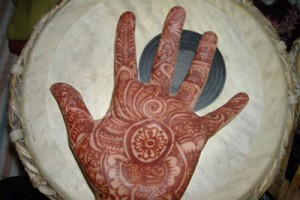Ayurvedic Resources
 Dosha Quiz
Dosha Quiz
Food Guidelines
Jyotish: Steven Highburger
Ayurveda / Sanskrit Terms
Prakruti
Primordial matter, the Cosmic Mother or cosmic womb, the root cause of the creation of the universe;on an individual level, prakruti is the pyschosomatic, biological constitution of an individual, the unique combination of the three doshas that forms the person’s constitution at the time of conception and creates the inborn tendencies that influence how one experiences life.
Vikruti
Unnatural, imbalanced, or modified state; the current state of the individual, as opposed to prakruti, the original state of the constitution; a state of the body and mind in which the individual is more prone to disease.
Dosha
Referring to vata, pitta and kapha the three psycho-physiological functional principles of the body, the ratio of which determines an individual’s constitution at the time of conception. When functioning normally and present in normal quantities, the doshas maintain all healthy bodily processes. When out of balance, they create disease.
Vata
One of the three doshas, vata is associated with ether and air elements. It governs all movements and activities in the body.
Pitta
One of the three doshas, made up of the fire and water elements; governs digestion, absorption, assimilation, nutrition, metabolism, and body temperature.
Kapha
One of the three doshas, combining the water and earth elements; the psycho-phsiological energy that forms the body’s structure and holds the cells together.
Dhatu
The elemental structural tissues that constitute the human body. There are seven basic tissues defined in Ayurveda: plasma, blood, muscle, fat, bone, nerve and bone marrow, and reproductive tissues
Ojas
The subtle, positive energy of kapha doshas, it maintain immunity, strength, integrity, and vitality and has a functionally integrated relationship with tejas and prana.
Agni
Fire element, the second of five basic elements in the body; it regulates temperature, performs digestion, absorption, and assimilation of ingested food, and transforms food into energy or consciousness.
Tejas
The subtle essence of fire (agni) and pitta dosha, tejas governs digestion on both subtle and gross levels; the energy of intelligence, discrimination and of all bodily fire; gives luminosity, brightness, brilliance, enthusiasm, passion; solar energy.
Prana
The vital life fore without which life cannot exist and which is primarily taken in through the breath; the flow of cellular intelligence that governs cellular communication, sensory perception, motor responses, and all subtle electrical impulses of the body; the subtle essence of vata dosha. Prana has a functionally integrated relationship with ojas and tejas.
Sattva
One of the three universal gunas or qualities of consciousness; the principle of equilibrium, intelligence, essence, consciousness, and clarity of perception; potential energy; jnanshatki, the energy of wisdom, understanding, and cognition; it gives rise to the mind and sense in Sankhya Philosophy.
Rajas
One of the three universal gunas or qualities of consciousness; the principle of kinetic energy; active, mobile, and responsible for all movements.
Tamas
One of the three universal gunas or qualities of consciousness (along with sattva and rajas), tamas gives rise to the five elements and the tanmatra (subtle qualities of the elements) in Samkhya Philosophy. It is the principle of inertia and is responsible for sleep, heaviness, slowness, unconsciousness, and decay. When it predominates in the mind, it brings ignorance, laziness, violence, and inertness.
— Textbook of Ayurveda; Fundamental Principle
by Dr. Vasant Lad (The Ayurveda Press, 2002).